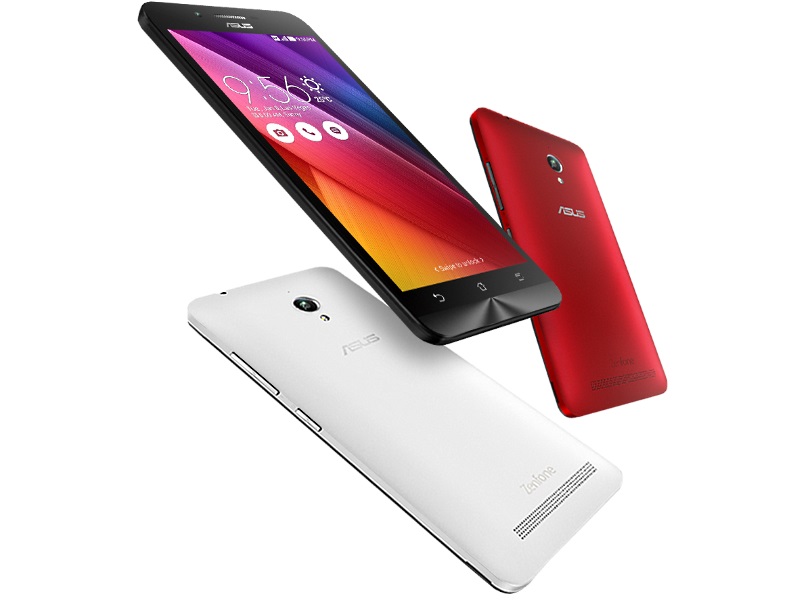- Home
- Mobiles
- Mobiles News
- Asus ZenFone Go With 5 Inch Display, 2GB RAM Listed on Company Site
Asus ZenFone Go With 5-Inch Display, 2GB RAM Listed on Company Site

The company was rumoured to be working on its budget ZenFone Go since July. The new ZenFone smartphone runs Android 5.1 Lollipop-based ZenUI. It supports dual Micro-SIM cards with dual standby support.
Unlike previous generation ZenFone smartphones that packed Intel chipsets, and the more recent series that included Qualcomm chipset powered smartphones, the ZenFone Go (ZC500TG) features a quad-core MediaTek (MT6580) processor clocked at 1.3GHz coupled with 2GB of RAM. According to the official listing, the handset will be available in 8GB and 16GB inbuilt storage variants and support expandable storage via microSD card (up to 64GB). It features a 5-inch HD (720x1280 pixels) IPS display. The handset sports an 8-megapixel rear autofocus camera with f/2.0 aperture.
The ZenFone Go comes with Bluetooth, Wi-Fi, GPRS/ EDGE, 3G, GPS/ A-GPS, and Micro-USB connectivity options. Notably, the handset doesn't support 4G connectivity. It is backed by a 2070mAh battery. The handset will be available in Black, White, and Red colours. It measures 144.5x71x9.98mm and weighs 135 grams. The ZenFone Go packs accelerometer, e-compass, proximity, and ambient light sensors.
The ZenFone Go will come with 100GB of Google Drive storage, which will be free for 2 years. Asus notes that the free storage will have to be redeemed in the Google Drive app by April 1, 2018.
(Also see: Global Launch Event Shows Importance of India as a Market, Says Asus CEO)
Asus last week at its ZenFestival event expanded its product portfolio in India with the launch of the ZenFone Selfie, the ZenFone 2 Laser, the ZenFone 2 Deluxe, and ZenFone Max smartphones as well as ZenPad 7.0 and ZenPad 8.0.
Catch the latest from the Consumer Electronics Show on Gadgets 360, at our CES 2026 hub.
Related Stories
- Samsung Galaxy Unpacked 2025
- ChatGPT
- Redmi Note 14 Pro+
- iPhone 16
- Apple Vision Pro
- Oneplus 12
- OnePlus Nord CE 3 Lite 5G
- iPhone 13
- Xiaomi 14 Pro
- Oppo Find N3
- Tecno Spark Go (2023)
- Realme V30
- Best Phones Under 25000
- Samsung Galaxy S24 Series
- Cryptocurrency
- iQoo 12
- Samsung Galaxy S24 Ultra
- Giottus
- Samsung Galaxy Z Flip 5
- Apple 'Scary Fast'
- Housefull 5
- GoPro Hero 12 Black Review
- Invincible Season 2
- JioGlass
- HD Ready TV
- Laptop Under 50000
- Smartwatch Under 10000
- Latest Mobile Phones
- Compare Phones
- OPPO Reno 15 Pro Max
- Honor Win RT
- Honor Win
- Xiaomi 17 Ultra Leica Edition
- Xiaomi 17 Ultra
- Huawei Nova 15
- Huawei Nova 15 Pro
- Huawei Nova 15 Ultra
- Asus ProArt P16
- MacBook Pro 14-inch (M5, 2025)
- OPPO Pad Air 5
- Huawei MatePad 11.5 (2026)
- Xiaomi Watch 5
- Huawei Watch 10th Anniversary Edition
- Acerpure Nitro Z Series 100-inch QLED TV
- Samsung 43 Inch LED Ultra HD (4K) Smart TV (UA43UE81AFULXL)
- Asus ROG Ally
- Nintendo Switch Lite
- Haier 1.6 Ton 5 Star Inverter Split AC (HSU19G-MZAID5BN-INV)
- Haier 1.6 Ton 5 Star Inverter Split AC (HSU19G-MZAIM5BN-INV)


















